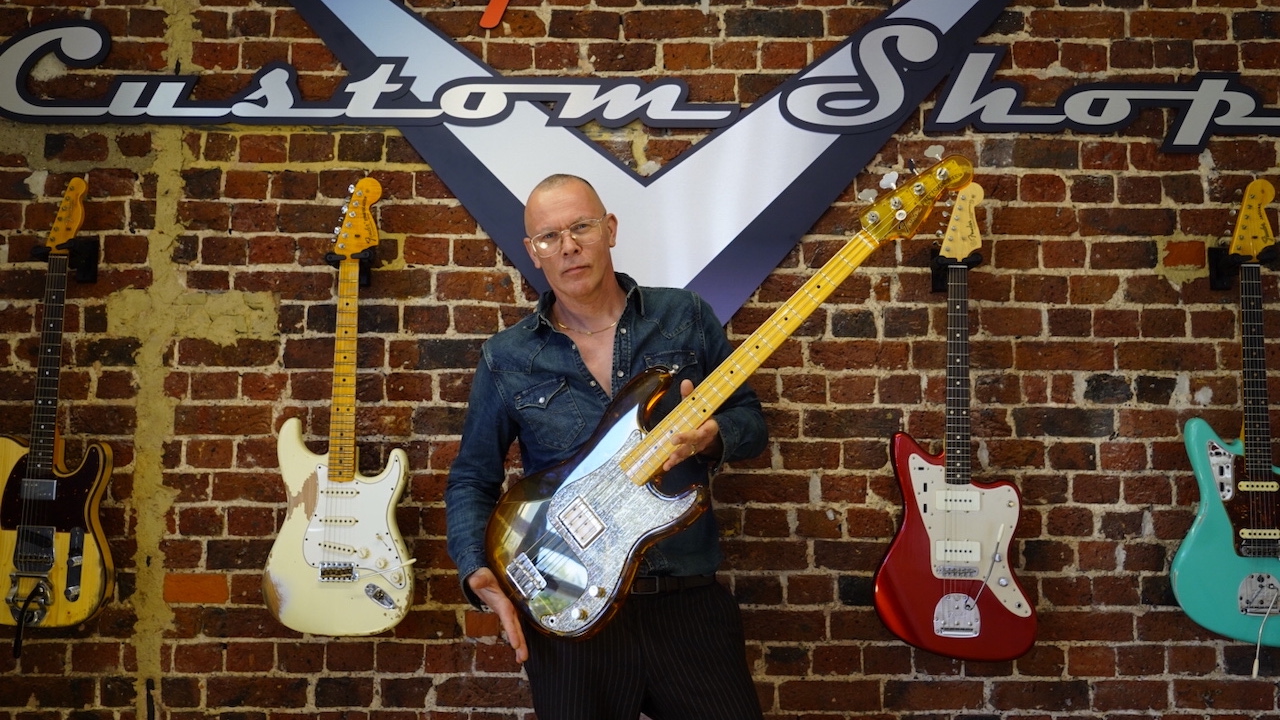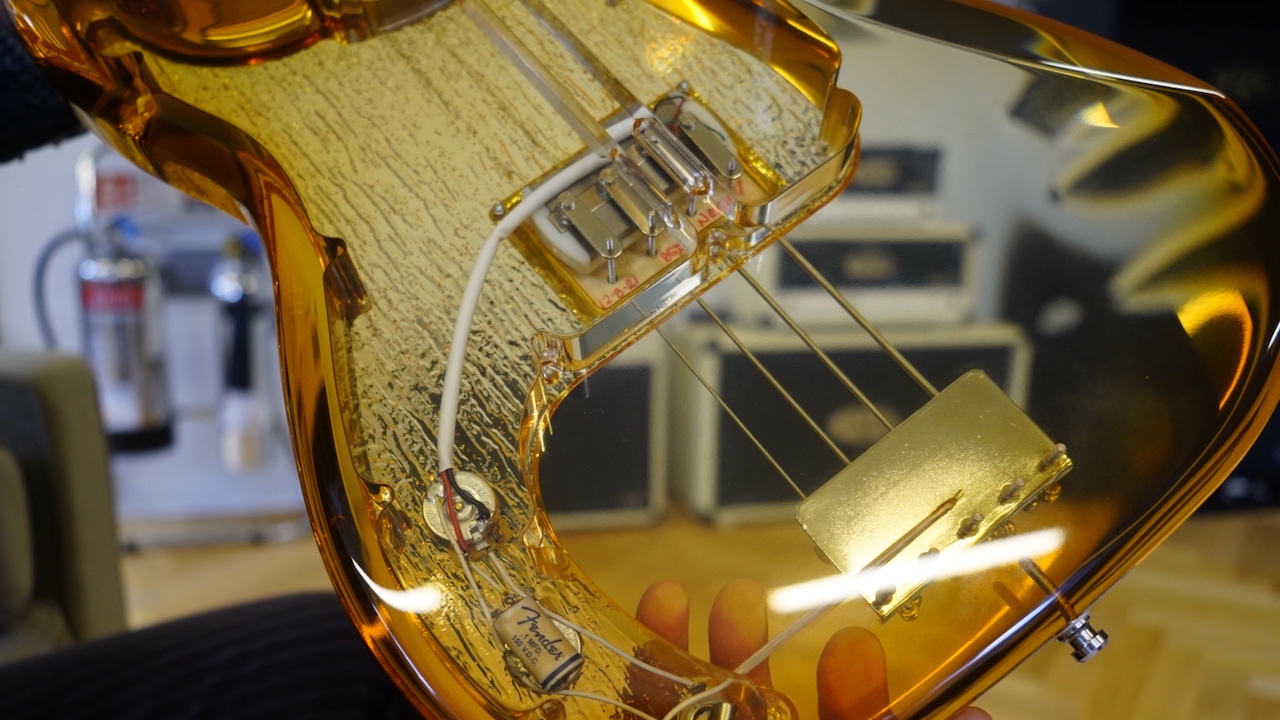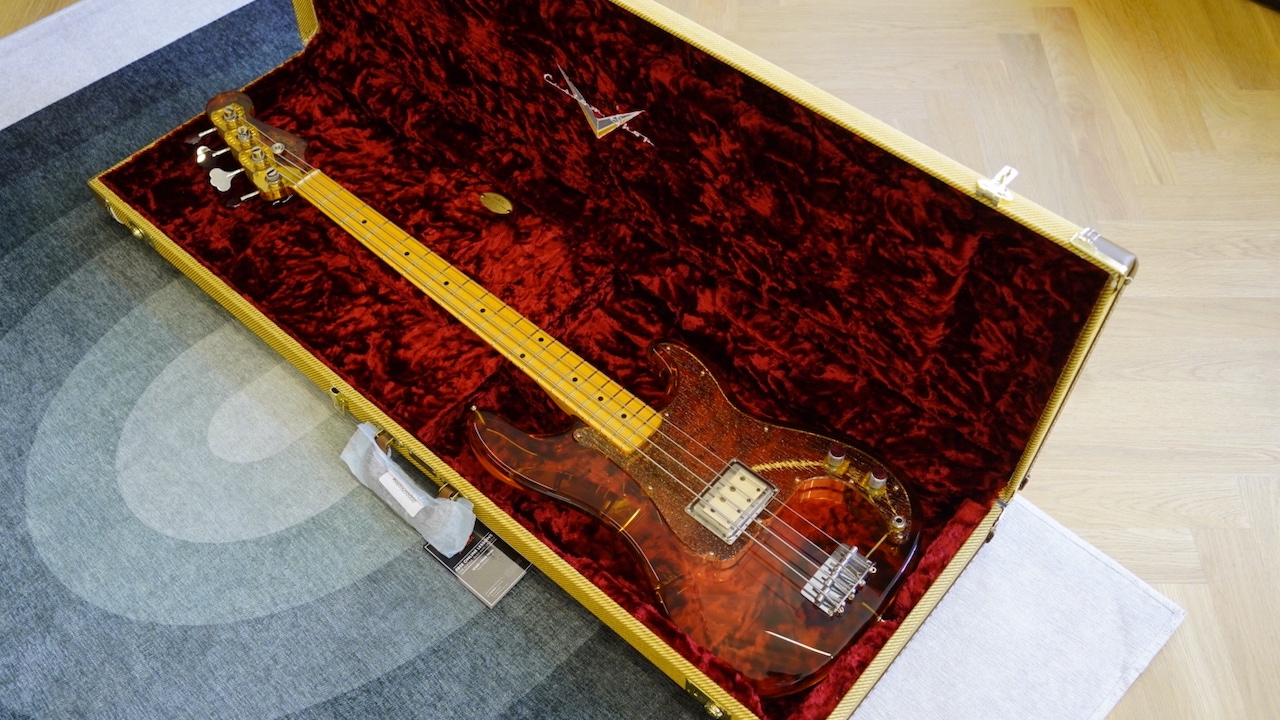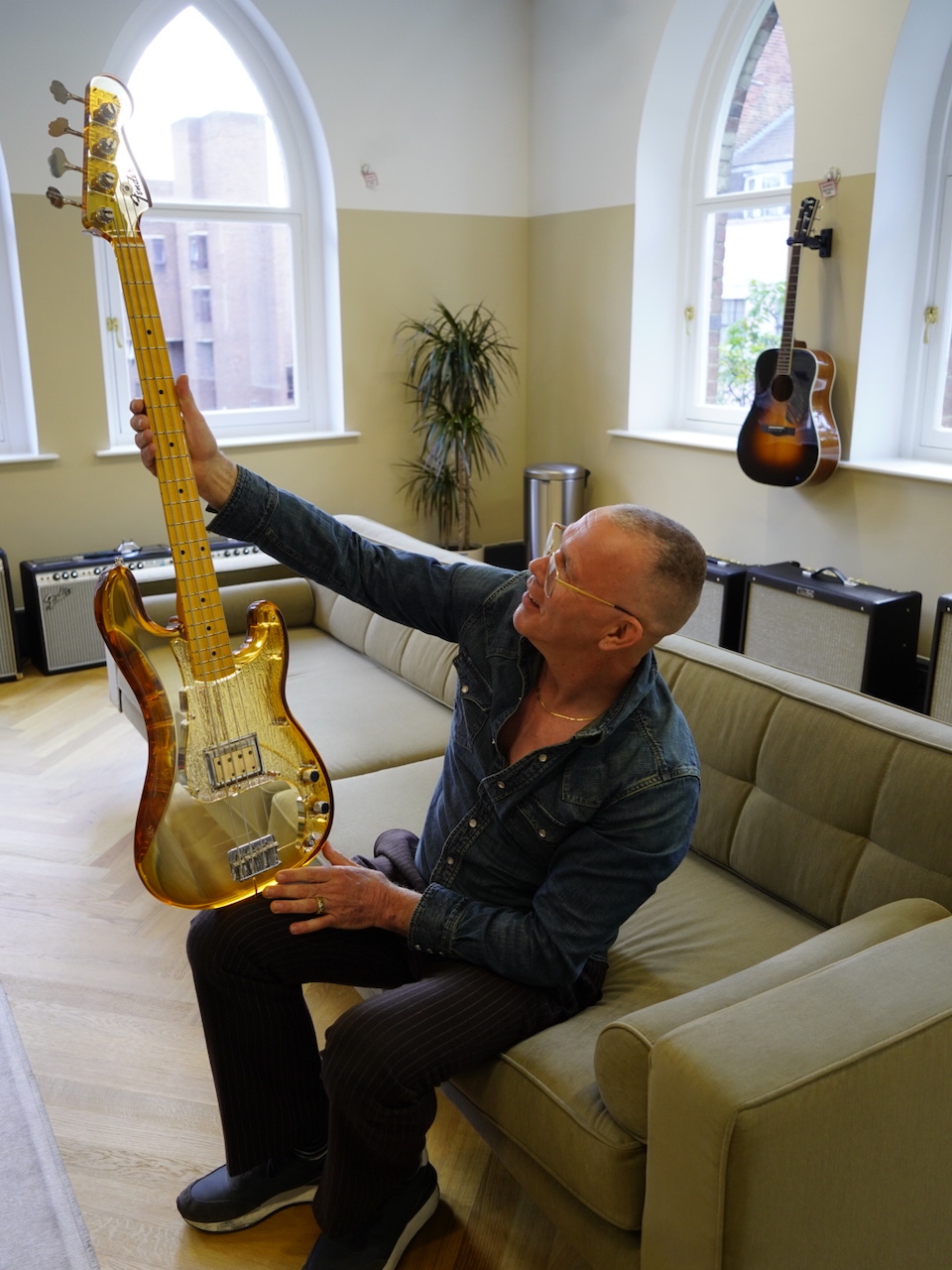Charlie Jones: “I always wanted a plastic bass guitar, but people never took the idea seriously”
The Cult’s bassist Charlie Jones gives us the first look at his plastic P-Bass, a Custom Shop one-off made by Fender Master Builder Scott Buehl

“Being back on tour in the States touring was a real blast!” enthuses the acclaimed Charlie Jones, whose resume with Page & Plant, Goldfrapp, Robert Plant and many other artists has given him a reputation as a go-to stage and studio bassist. He has good reason to be cheerful, not only because he’s just back from a successful Stateside tour but also because he has a new bass.
A Custom Shop one-off made by Fender Master Builder Scott Buehl, the new Precision has a body made of acrylic and is the fourth transparent-bodied bass he’s owned. We ask him what the benefits are of a see-through bass, and check in with Buehl himself about the challenges of this crazy material...

Charlie, you’re known for playing acrylic basses, to the point where Fender have now made you one in their Custom Shop.
"They have indeed. I always wanted a plastic bass guitar, but people never took the idea seriously. There were very few around when I was starting out, apart from Dan Armstrong basses, so I bought one of those before I started working with Page & Plant. It wasn’t quite right, though: there was something about the feel of the neck that I wanted to change.
"I started working with Fender in 1998, so I asked them if they would consider making me a plastic bass. They said, ‘Well, it’s not really our thing’, so I had an acrylic bass made by Neil MacDonald of Nightingale Guitars. That was a P-Bass copy, with a plastic headstock grafted onto a wooden neck. You can see me playing it on The Wanton Song with Page and Plant on Jools Holland in 1998."
How do the tones differ from a regular wood-bodied bass?
"In my experience, having had three different acrylic basses already – the new one being the best so far – is that they have a low-mid focus and punch to the sound. It’s got this low-mid strength to it, to the point where if you were sitting behind a desk in the studio, you could really hear the difference. The other thing is that having a plastic headstock on top of a wooden neck also makes a difference to the sound: it’s really focused, with a strong, direct type of tone."
And what’s the sustain like?
"Fantastic. It has a lot of good, long sustain – very clear and tuneful and melodic. It’s a very musical sound. You wouldn’t call it a light bass, but it’s not a backbreaker. It’s no heavier than playing a Gibson Recording bass, for example. I pair it with Aguilar amps and I use Bass Centre strings."

You’ve been out on the road with the Cult lately. Their former bassists Jamie Stewart and Chris Wyse have both told us that even though loads of the Cult’s hits are just eighth notes in D, C and G, there’s a lot of nuances in those bass parts. Is that correct?
"It’s very interesting. I’ve done a lot of stuff as a bass player over the years, on electric and upright, so when I joined the Cult I knew not to underestimate them, because Ian [Astbury, singer] and Billy [Duffy, guitar] are fantastic musicians: conceptually, they’re off the scale. Billy said to me, ‘Everyone thinks the Cult’s music is easy, with only four or five chords, but every song is different. You have to know the song inside out, because if you don’t know the difference between me playing a C instead of a G or an F instead of A, it’s easy to screw up.’"
In other words, simple songs are just as challenging as complex ones?
"Maybe even more challenging. Remember this: when you’re playing music that’s complex, it has very obvious ornamentation that you can hang a hat on. That’s easier than playing music where all the chords are very similar and they swap around. It’s a bit like saying to somebody who works with James Brown, ‘Oh, the songs all have the same grooves all the way through’. Yes, but just imagine learning all that stuff. It’s the same principle with the Cult. The songs are very well thought out. There’s no meat on the bone – so you need to rehearse them until you’ve got them down perfectly."
Find out all you need to know about Charlie's transparent P Bass in this next clip. His new acrylic axe emerges at 10:00. Charlie also demos his Nightingale Guitars P-Bass copy at 06:30.
Grand Designs: An interview with Scott Buehl of Fender Custom Shop
Chances are you may already know about the handiwork of Fender Custom Shop master builder Scott Buehl. When it comes to the art of guitar building there are few luthiers who can match his open-minded approach. We asked Scott to explain the fine art of making basses from acrylic.
Scott, what are the challenges when making a bass body from this material?
"When you cut the stuff, you have to really slow the cutters down, and also you have to cut with water. If you cut it dry, it would be very slow and take very small bites. Also, it’s very sensitive to all of the chemicals that we use. Are you familiar with the term crazing, where the surface cracks? That’s what happens when you touch acrylic with the wrong stuff: it shatters like a piece of safety glass, down to about half a millimetre deep. It’s a nightmare."
Is it a heavy material?
All the latest guitar news, interviews, lessons, reviews, deals and more, direct to your inbox!
"Very heavy. If you look at Charlie’s bass, with the pickup routing, I cut that material out all the way to the edge of the pickguard. I took as much weight as I could out of the thing."

Is it physically strong?
"If you hit it hard enough, it’s going to break, depending on where you hit it, but the nice thing is that you can just polish that spot and fix it, if it doesn’t have paint on it. But no, it’s not strong. I couldn’t make a neck out of it. I wouldn’t say it’s rubbery, but it does flex more than wood when it’s under load, so I have to compensate for that with the thickness of the material."
Charlie’s bass has an acrylic headstock. How does it attach to the neck?
"It’s glued on, with a scarf joint. The truss rods actually anchor out in the acrylic. It’s joined at an angle, and then the fretboard goes on top of those two pieces and makes a sandwich, so it’s really strong. The challenge there was figuring out what to glue it with, and trying to keep the truss rod clean."

What’s the coolest instrument you’ve ever made?
"There was a Ferrari Red Jazz bass with a maple neck that I built 10 years ago. It was really beautiful, and everything on it was great. Another one was a Strat made out of hydroformed aluminum. Everybody loved it, and a VP came in one day and said, ‘Hey, can we loan this guitar out to this artist? He’s recording a record right now and he wants to borrow it’. So I sent it out to the guy, and he ended up keeping it because he liked it so much. I wish I could tell you his name, because he’s a very famous guy, but he deals with another guitar company and doesn’t play our stuff."
What’s the craziest guitar you’ve made?
"It was a guitar called a Splattercaster, which was made out of aluminum. It had windows with liquid goo inside that moved around. That was about 20 years ago, and funnily enough it was for a design contest in your magazine, Guitar World. That took such a long time, with such a lot of development work, that at the end, I just wanted to hang the thing up and shoot it!"
For more information about Charlie Jones visit charliejones.net.
You can follow Scott Buehl on Instagram at www.instagram.com/scotty_fender.
Joel McIver was the Editor of Bass Player magazine from 2018 to 2022, having spent six years before that editing Bass Guitar magazine. A journalist with 25 years' experience in the music field, he's also the author of 35 books, a couple of bestsellers among them. He regularly appears on podcasts, radio and TV.

